UC Gardening Blogs
Oh, for a Water Bear Sculpture at the Bohart Museum!
If you can picture a huge water bear (tardigrade) sculpture gracing the entrance to the Bohart...
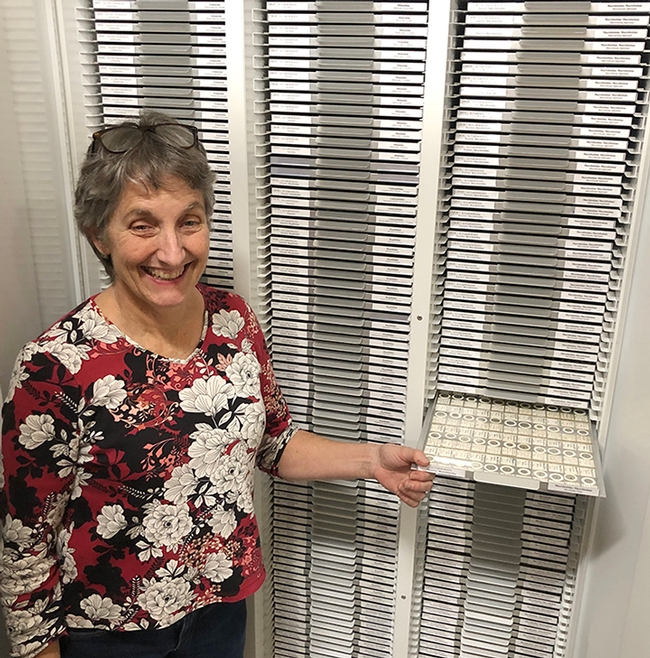
Lynn Kimsey, director of the Bohart Museum of Entomology, with part of the tardigrade collection. The Bohart collection includes some 25,000 slide-mounted specimens. (Photo by Kathy Keatley Garvey)
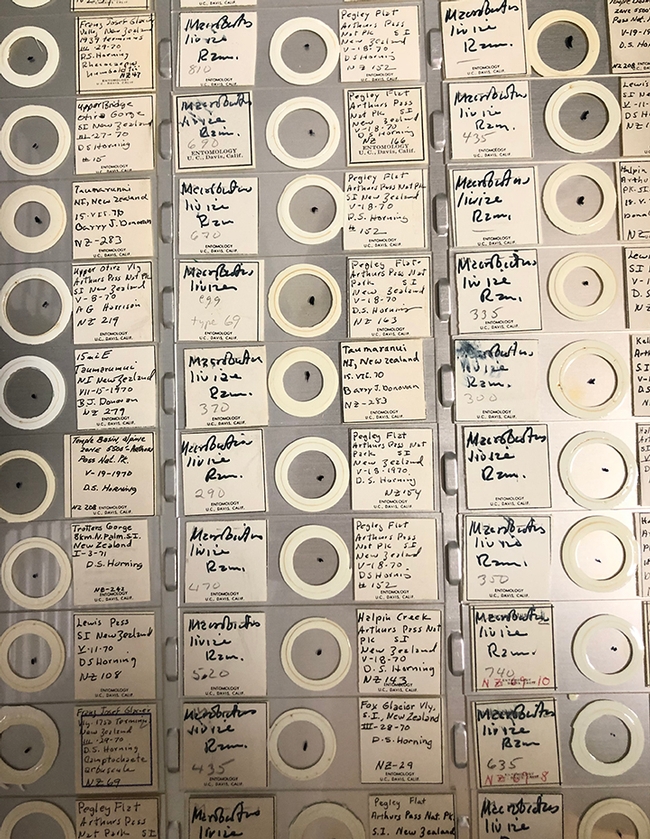
The Bohart collection includes some 25,000 slide-mounted specimens. (Photo by Kathy Keatley Garvey)
It's Potato Planting Time...or close to it
If you love potatoes but have never tasted a homegrown one…now is the time!
Potatoes are very easy to grow, and speaking from experience, there is something magical about planting 1 little tuber and pulling up a basket of potatoes. I began planting potatoes in 2002, thinking it would be a great way to begin teaching my kids how to garden. I can't tell you how fun it was to see their faces as we kept digging and digging and pulling up one potato after another.
So, let's get started:
- Most gardeners agree that potatoes can be planted 2 weeks before the last freeze. The last freeze for Zone 9 is 2/24/20, which means you can put tubers in the ground any time after the first week of February.
- First step…A trip to your local hardware store. At a storeinVacaville, I was able to find the following tubers:
- ‘White Superior': harvest 85-90 days after planting.
- ‘Red Borland': harvest 65 days after planting.
- Red, white, and blue blend: late spring-early summer harvest. (Some pictured on package look like fingerling)
- Preparation before planting…Once you bring your tubers home, which actually look like mini potatoes, get them ready to plant. You can choose to plant your small seed potatoes whole; however, I like to cut my seed potatoes into smaller pieces, making sure I have at least one to three eyes per piece. (My pieces are usually about the size of an ice cube.) Once cut, I leave them on my countertop for a few days. This step helps your cut-pieces form a callous, reducing the risk of diseases.
- Let's plant…Potatoes prefer rich, moist soil. If this doesn't sound like your soil, amend the soil before planting with organic matter which will enhance growth. I add homegrown compost to my raised beds, if I'm a bit short, I will buy a bag or two of soil amendment or bags of organic compost. This is an important step as poorly drained soil may cause your growing potatoes to rot. Using a raised bed to grow your potatoes works great because they have a very shallow root system. This shallow root system means a light watering once or twice a week will keep them growing. Plant in a sunny spot to encourage strong growth.
- The growing process…Once you begin to see green shoots coming up from the soil, begin to bring the dirt up around the base of the plant. This helps to keep the tubers covered support as well as the plant. (Sometimes, I find, I must add additional organic matter.). Bringing the dirt around the base of the plant is called ‘hilling', which helps to keep the potatoes from getting sunburned. The last hilling should be done before the potato plants bloom when the plant is about 6 inches tall. Don't omit this step as a sunburned potato may turn green, producing a chemical called solanine. Solanine not only makes the tubers taste bitter but more importantly…is toxic!
- Harvest and Storage…Once you find your potato tops turning yellow and dying back, it's time to harvest. Just keep digging until you hit the jackpot. Meaning, lots of potatoes! One more step before eating is drying or curing your potatoes. This can take as little as 4-5 days, allowing the surface of the potato time to harden and minor injuries to seal. If you have a big harvest, store your potatoes in a cool, dark, well-ventilated area. Potatoes can be stored for up to 6 months.
- If you're interested in additional information:
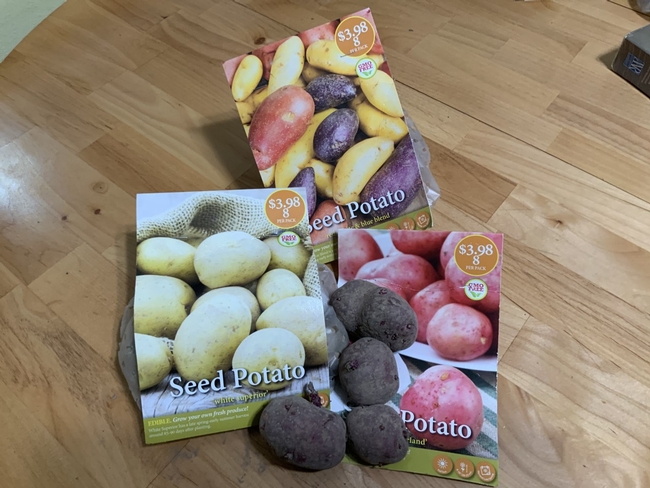
photo by Mary Gabbard
A Monarch Sighting in January? In Sacramento? Yes!
News flash: Monarch sighting in Sacramento! Butterfly guru Art Shapiro, UC Davis distinguished...
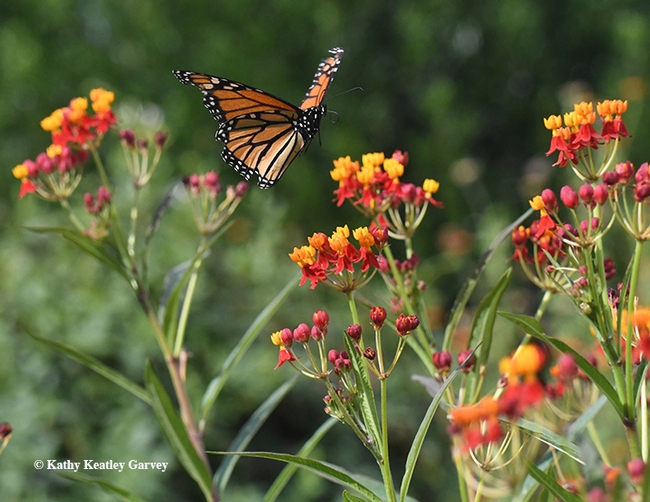
A monarch in flight in the summer of 2017 in Vacaville, Calif. This is the non-native tropical milkweed, Asclepias curassavica.(Photo by Kathy Keatley Garvey)
Geoffrey Attardo's Tiny Subjects Drawing Large-Scale Attention
UC Davis medical entomologist-geneticist Geoffrey Attardo's tiny research subjects in Tupper Hall...
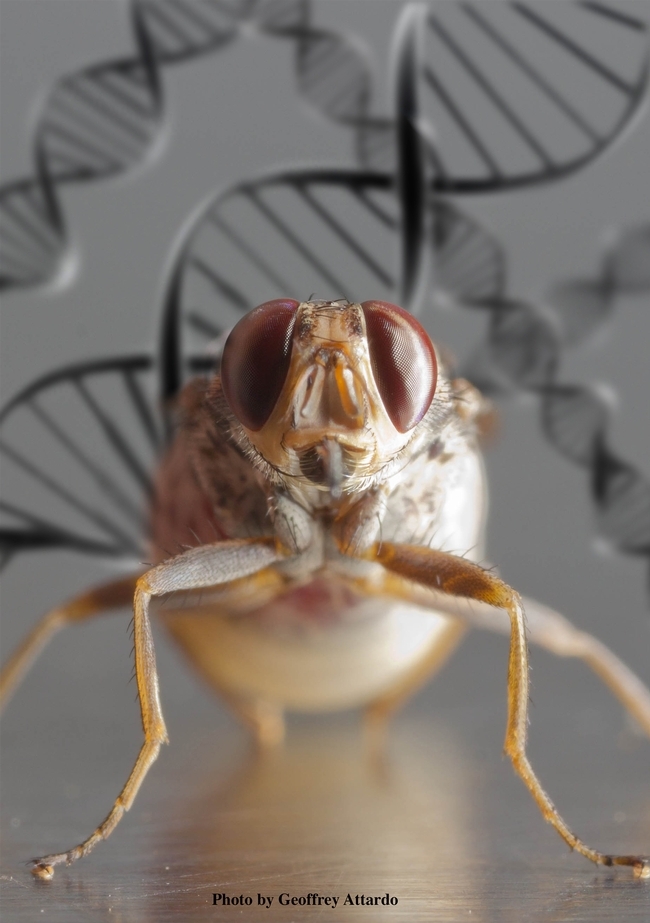
This is the tsetse fly, Glossina morsitans morsitans, that Geoffrey Attardo researches in his UC Davis lab. (Photo by Geoffrey Attardo)
Searching the California Floristic Province for Trapdoor Spiders
A UC Davis scientist has just received a federal grant to study trapdoor spiders in California,...
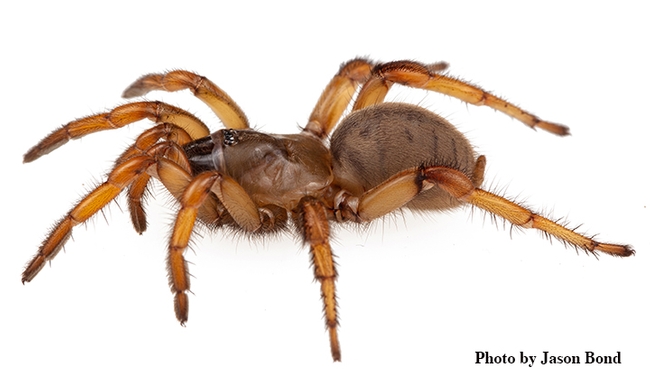
A trapdoor spider, Aptostichus sp., one of the species that Jason Bond studies. (Photo by Jason Bond)



